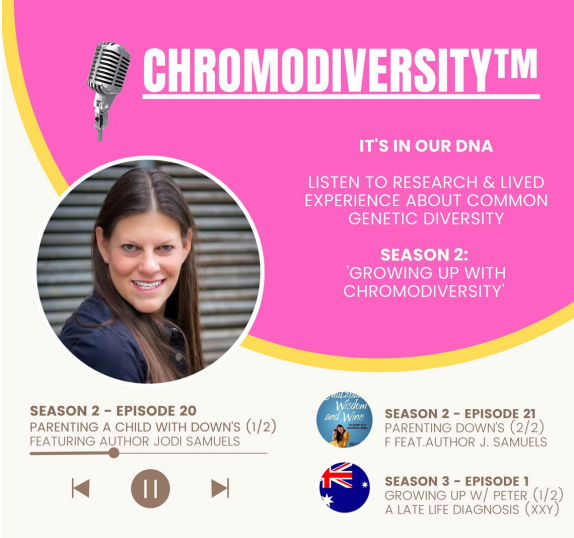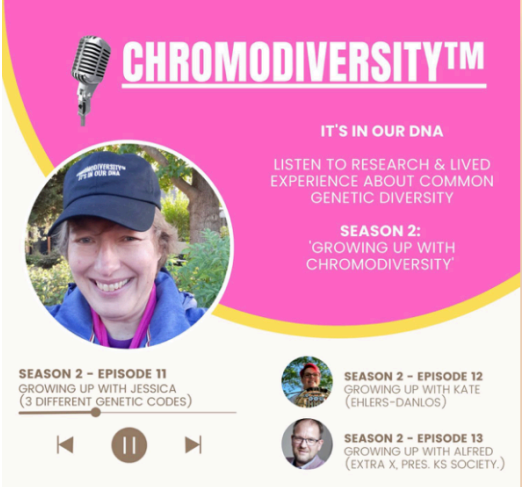Character Strengths
Children with genetic differences are often described in terms of limitations and medical challenges, and much of the available information focuses on what they can’t do. This focus makes it easy to miss their unique strengths.
Like all people, children with genetic variations have character traits that can make them great leaders, friends, creators, or problem-solvers. Research shows that promoting natural strengths not only helps children feel happier and more confident but also improves the well-being of their families¹.

Promoting character strengths is especially important for young children with genetic differences, as it can help protect against educational challenges and psycho-social issues like anxiety, depression, and behavioral difficulties¹. In contrast, focusing only on problems after a diagnosis can lower a child’s self-esteem and influence how parents and teachers view their abilities².
Parent Reported Strengths in Children with an Extra X or Y Chromosome¹
“Heart of gold”
“Eager to please”
“Amazing imagination”
“Very curious mind”
“Loves learning”
“Absorbs information like a sponge”
“Incredibly hard working”
“Persistent problem solver”
Unlocking Strengths in Children with Genetic Differences
Wisdom
Strengths that help to acquire and apply knowledge
Creativity
Curiosity
Judgement
Love of learning Perspective
Courage
Strengths that help to exert will and meet adversity
Bravery
Perseverance
Honesty
Zest
Humanity
Strengths that help to connect with children in one-on-one relationships
Love
Kindness
Social intelligence
Justice
Strengths that help to succeed in the community and work in groups
Teamwork
Fairness Leadership
Temperance
Strengths that help to protect against excess and manage behavior
Forgiveness
Humility
Prudence
Self-regulation
Transcendence
Strengths that help to provide meaning and connection with the wider world
Appreciation of beauty & excellence Gratitude
Spirituality
Hope
Humor
Core Virtues
Character Strengths
Positive Psychology and Character Strengths
Positive psychology focuses on understanding what makes people thrive, including six core virtues valued across cultures: wisdom, courage, humanity, justice, temperance, and transcendence. These virtues are made up of character strengths — the best qualities of an individual’s personality³⁻⁴. Each person has their own “signature strengths”, which are the traits most central to who they are. Using these strengths in everyday life has been shown to boost well-being and overall life satisfaction⁵.
“For a long time, I believed that everything was my fault. And it crushed me.
But it also built my resilience. Because I refused to be crushed.”

In the first international study¹ on parent reported strengths in 3 to 21 years old with SCAs (X and Y chromosome variations), parents describe an overwhelming number of strengths corresponding to the virtues of humanity and wisdom, such as “extraordinary kindness”, “creative thinking”, “love of learning”, and “courageous persistence”.
Although research is lacking due to the focus on limitations and pathologies, it is likely that many other genetic differences (including more visible ones) can be associated with strengths, as suggested by lived experience testimonials, such as in the podcast below.
XXY (Klinefelter)
XXX (Trisomy X)
XYY (Double Y)
1. Kindness
2. Perseverance
3. Love of learning
4. Creativity
5. Social intelligence
1. Love of learning
2. Perseverance
3. Teamwork
4. Curiosity
5. Kindness
6. Social intelligence
7. Humor
Greatest Character Strenghts
Genetic Variation
“Your child is a person first, not a medical condition”

Strengths Research in Youth with Genetic Variations
© 2023 My XXY | Chromodiversity™ Foundation. All rights reserved.
Encourage your child or student to purposely conduct daily prosocial acts⁶ or journal and reflect on their own kind behaviors at the end of each day⁷.
Encourage your child or student to dig deep into topics of interest at home and at school, for instance, through “student centered, project based” learning⁸.
Involve your child or student in extracurricular creative clubs. Give explicit encouragement to ‘be creative’ with school work and other tasks⁹.
Celebrate a growth mindset in your child or student: focus positive feedback on effort and energy rather than final accomplishments or grades¹⁰⁻¹¹.
Help your child think about and practice their social skills with others. Consider “mindfulness”, as it can improve social contacts and mood in children¹².
Kindness
Love of learning
Creativity
Perseverance
Social intelligence
Strength
Action
How to Promote Strengths: 5 Examples
“Embrace difference, celebrate strengths!”

What Teachers Need to Know
Supportive school environments and positive parent relationships, along with tasks that tap into students’ strengths, can help children overcome academic challenges related to genetic differences.
-
Strengths-based approaches improve well-being, boost academic performance, and build student capacity¹³.
-
Strengths-based assessments have proven validity and reliability for students with and without learning disabilities¹⁴.
-
Documenting strengths in standardized reports predicts higher student success. Educators who receive reports highlighting strengths tend to have a more positive outlook, leading to better outcomes¹⁵.
For example, focusing on hands-on science or creative projects for students with strengths in these areas but challenges with language or memory can improve performance. Using strengths is more energizing and fulfilling than focusing on weaknesses¹⁶.

Promotion of strengths is particularly important in the case of children with genetic differences. This approach helps to avoid educational failure and psycho-social problems, and improve quality of life for both children and their families. Always presume competence, and focus on strengths first.
Consider sharing this resource with your child's healthcare professional or school if you feel it could be helpful.
Takeaway
Further Reading
© 2025 My XXY | Chromodiversity™ Foundation. All Rights Reserved. Please note this content is not medical advice and is for informational purposes only. For further resources, visit chromodiversity.org.
.png)